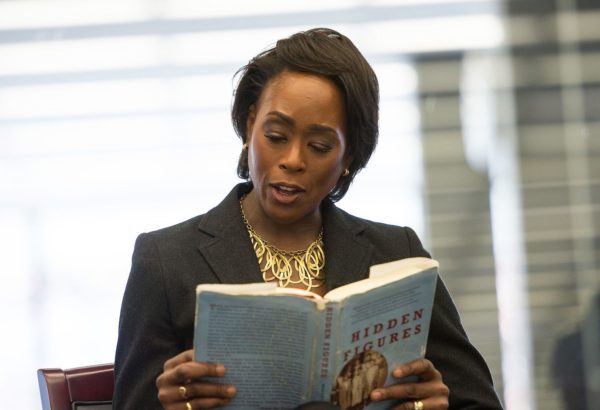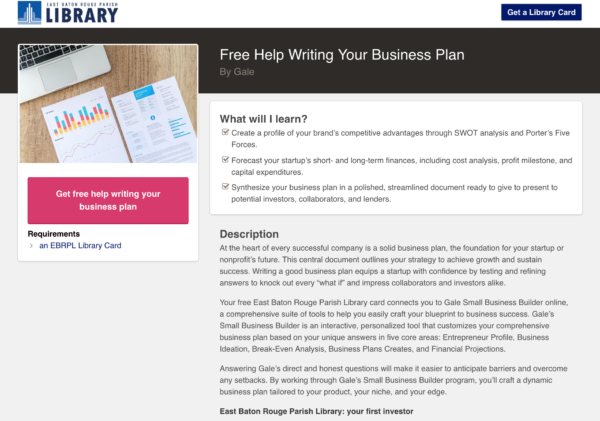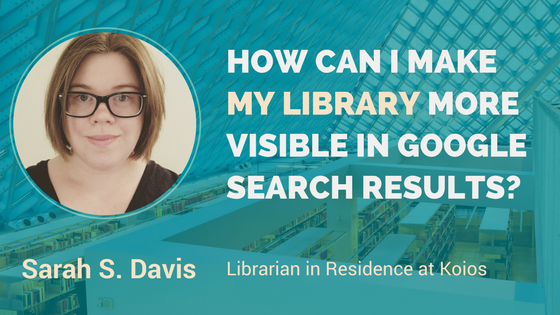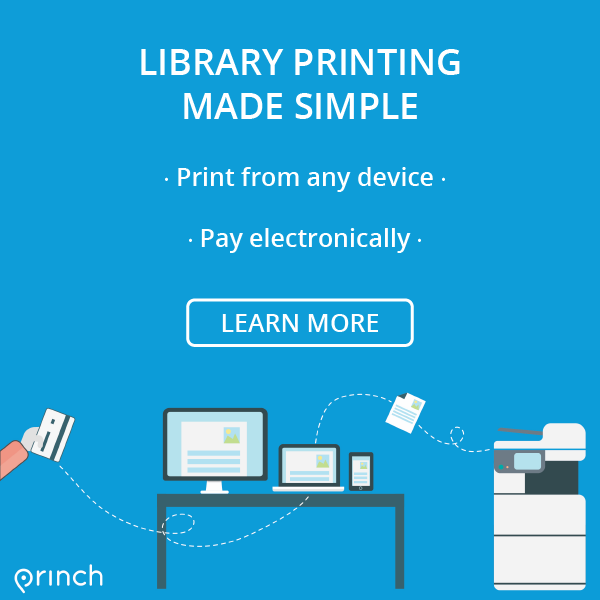Search marketing is a wonderful opportunity to create an online presence that will reach out to more members of the community. To learn more about the ways you can apply search marketing to your library’s website we’ve had a chat with Sarah S. Davis, MSLS – Content Strategist and Librarian in Residence at Koios – a company specializing in library marketing. Read her insights below!
Libraries are hubs that directly support their communities with free, accessible, and quality resources and services. Connecting potential patrons to libraries is a crucial part of growing your patron base and your circulation numbers. To do that, patrons need to be able to find their libraries online.
Connecting potential patrons to #libraries is a crucial part of growing your patron base and your #circulation numbers. To do that, patrons need to be able to find their libraries online. Share on XAt first, search marketing might sound intimidating or maybe even too salesy for a library’s mission but using simple strategies to raise your library’s visibility on Google, is actually deeply aligned with fundamental services of library science.
With useful and authoritative content, as well as information that is specific to your community’s needs, optimizing your website is a natural fit for libraries. Here are three ways you can easily apply search marketing to your library’s website to reach more patrons than ever.
1. Build a digital library that brings new patrons in the door
When your patrons are conducting a search on Google, they are at the most basic level looking for information just as they would when they come into the library to locate an item. Offering reference assistance and connecting patrons with resources is a cornerstone of library science.
Connecting your patron’s search with the valuable content that answers their questions on your library’s website is a win-win effort; not only is the library’s place as a trusted source of information reinforced, but also Google values sites with thoughtful, helpful content and rewards them with higher rankings.
Connecting your patron’s #search with the valuable content that answers their questions on your #library ’s website is a win-win effort. Share on XBut what does “content” mean for libraries, anyway? Those awkward keyword stuffed articles with clickbait titles? Though the word might have negative connotations, libraries have always been in the content business by providing valuable information through reference interactions, programming, and of course, circulation and materials.
One of the best ways #libraries can be more visible in #Google is by adding authoritative and personalized content that answers the searchers’ queries, especially with a focus on answering hyperlocal questions. Share on XOne of the best ways libraries can be more visible in Google is by adding authoritative and personalized content that answers the searchers’ queries, especially with a focus on answering hyperlocal questions. For example, if your library is in a historic location and you frequently get asked about local attractions, create a blog post series for some of the notable sites and landmarks (eg. museums, battlefields, etc.) offering a personalized approach with favorite sites and insider tips from your staff.
Resist the urge to think that your reference services are in competition with your online articles, blog posts, and landing pages. In fact, nothing could be a better advertisement for your library’s resources online and off.
Getting started…
- Think about the reference questions you get asked again and again, then create a blog post, guide, or quick FAQ with the information a potential patron might first ask Google before going to a librarian. Imagine you are answering one of these questions with all the time and depth you could in an extended reference interaction.

Image credit: City of Kearney
2. Create web content that drives programming attendance
Struggling with attendance at programs and special events? Your future attendees are already out there searching for your library’s services. Get them in the door with the content they are searching for through Google. By creating articles, blog posts, and landing pages that draw in possible patrons and showcase the library’s programs and events, you can reach new patrons.
Your future attendees are already out there searching for your #library ’s services. Get them in the door with the content they are searching for through Google. Share on XLet’s look at book clubs and author events. Book-related services and offerings remain a cornerstone of library usage. It can be difficult to grow a book club or sustain momentum with your bookish events, but reading actually lends itself well to creating related content online. For your next book club selection, create a blog post or page on your library’s website with a reading guide. Introduce the book, a description, an author biography, several discussion questions, and roundups of book review extracts.
Get in the habit of promoting the blog posts to your book club participants through signage and reminder bookmarks to draw traffic and even continue the conversation online through comments and social media groups. New patrons who search for more information on the book will find a reading community is closer than they realized.
Getting started…
- Choose a book-related event in the upcoming months and create a series of blog posts that tie into the event, being sure to mention your local book group, author visits, or other bookish events. In one post, provide an author biography. For another post, write discussion questions based around themes in the book or the author’s work. Brainstorm other blog posts or articles you could create that a reader might be searching for and look for ways to connect that information to your library.

Image credit: Wikimedia Commons
3. Use landing pages to drive e-resource circulation
The resources libraries offer are no longer only found on a shelf in a building that closes each night. Today, libraries offer access to many e-resources, including subscription-based databases, career development tools, journals and news sources that patrons search for online. However, many patrons might be totally unaware of the library’s services and unlikely to go to their library’s homepage first. A search-optimized and patron-focused landing page that is targeted to the specific skills and resources patrons are looking for can help a library rise in Google’s rankings and increase online circulation.
A search-optimized and patron-focused landing page that is targeted to the specific skills and resources patrons are looking for can help a #library rise in Google’s rankings and increase #online circulation. Share on XLibraries sometimes use landing pages to fulfill a supply. In this case, they are mostly descriptive and promote the supply of a resource. While in most cases this information can be useful, it does not always consider the services a patron might be seeking, such as skill building. Moreover, Google prioritizes content that is unique, rather than content that is replicated over and over. Thus, good landing pages are patron focused, meaning they answer a call for what that patron is looking for and that it meets their needs.
Patron-oriented pages can help your #library rank better and lead to better conversions with more #librarycard signups, a growing tech-minded patron base and increased circulation of physical #materials. Share on XPatron-oriented landing pages can help your library rank better and lead to better conversions with more library card signups, a growing tech-minded patron base and increased circulation of physical materials and e-resource usage. For example, Koios has partnered with East Baton Rouge Parish Library to reach growing startups and new businesses in their area by localizing custom landing pages for resources through Gale Small Business Resource Center, Lynda.com courses, and more.
Getting started…
- What e-resource do your patrons use the most? Review the description provided by the vendor and see if there are ways you can personalize it to fit your Consider keywords and phrases that pair your online resources with local needs. For East Baton Rouge’s Gale Legal Forms resource, we incorporate keywords like Louisiana legal forms that match searches for state-specific requests rather than using generic descriptions.

A Kois-Built East Baton Rouge Parish Library landing page for Gale Small Business Builder. Image Credit: Koios
Embrace search marketing for your library
Digital marketing is a limitless opportunity to expand your patron base by creating content that helps make your library’s website more visible in search results. Adding keywords helps search engines index your site higher when the description of your content, its purpose, and who it is for is clear and consistent. At Koios, we customize library marketing needs to fit your goals and your community, whether it’s generating and managing Google search ad campaigns, developing customized content solutions, or promoting e-resources with unique landing pages. Your potential patrons are out there searching for you.
Digital marketing is a limitless opportunity to expand your patron base by creating content that helps make your library’s website more visible in search results. Share on XDid you enjoy Sarah’s insights? Follow us on Twitter and let us know which technique you’re going to use next at your library!
In case you want to find out more about search marketing for libraries, you can get in touch with Sarah on Linkedin here or visit koios.co. We will be back next week with another interesting article!
Recent posts
Enhancing User Experience For Libraries In The Digital Age
In this week's Princh Library Blog post, recurring guest writer Sam L. Bowman covers how your library can improve the user experience on [...]
Library Password Practices—Balancing Accessibility and Security
In this week's Princh Library Blog, recurring guest writer Nina Grant discusses a basic, but nevertheless crucial digital security principle: secure password [...]




Leave A Comment